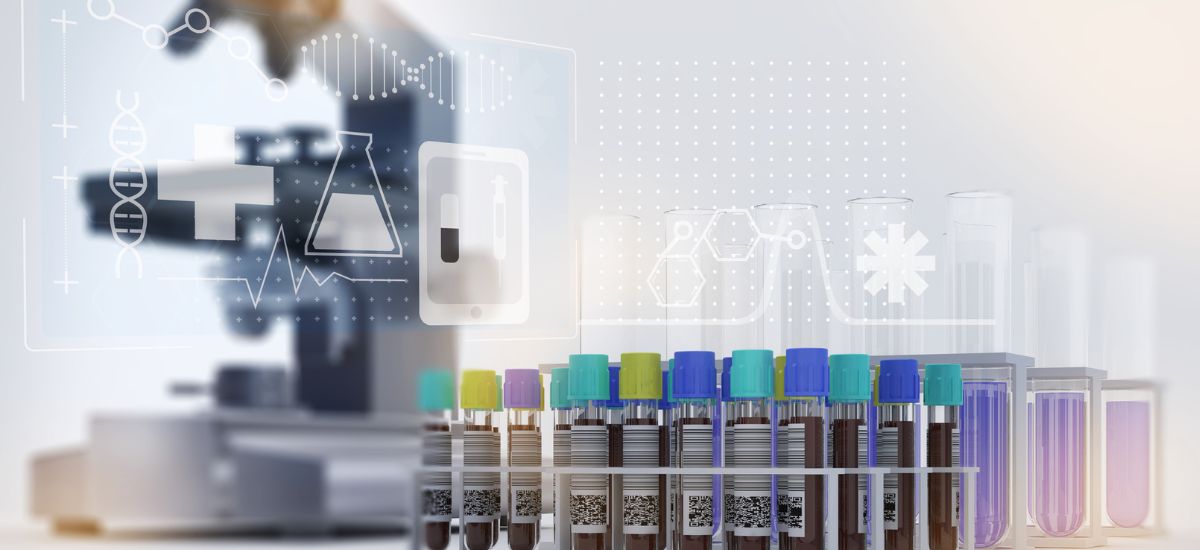
The development and validation of biomarkers is essential to furthering our understanding of disease progression and treatment response in individuals with MS. Given the highly variable nature of the MS disease course, reliable biomarkers are essential to facilitate treatment decisions, which can significantly impact long-term patient outcomes, and may, in the future, provide additional evidence in differential diagnoses. At ECTRIMS 2022 [1], several sessions highlighted new and reliable imaging and non-imaging biomarkers currently in development for MS. In addition, a symposium by the European Charcot Foundation [2] examined the importance of placing the patient at the centre of care in MS. Through the integration of patient-reported outcome (PRO) measures into clinical practice, it may be possible to garner further evidence regarding disease progression and treatment effects. When combined with information gathered via the application of biomarkers, this may facilitate a move towards more personalised treatment approaches for MS. In this edition of ECTRIMS Insights, we will examine some of the data presented at the 38th Congress of ECTRIMS [1] and explore the novel biomarkers that could become integrated into routine care of individuals with MS.
Imaging biomarkers in MS

Imaging plays an important role both in the differential diagnosis of MS and in the ongoing monitoring of disease activity and treatment response. Important insights into the underlying neurological pathology of MS, and disease progression, can be gained from imaging findings [3] such as gadolinium enhancements, brain atrophy patterns and chronic lesion phenotyping. Network neuroscience studies have improved our understanding of brain responses to complex cognitive tasks and have demonstrated how coordination among brain regions supporting executive function is required for cognitive flexibility. Brain networks in individuals with MS have been measured by means of structural, diffusion or resting-state functional magnetic resonance imaging (MRI), with longitudinal MRI measures used to study neurodegeneration. In MS, it has been noted that neurodegeneration begins in the thalamus before progressing towards the cortex [4], with network re-routing able to compensate for initial thalamic atrophy and so prevent clinical impairment. However, in later stages of the disease, re-routing becomes impossible and disease progression occurs. Multilayer modelling based on MRI and convolutional neural networks is currently being explored as a means of predicting disability level in individuals with MS.
Perilesional iron rims [5] have also been demonstrated to be a prognostic biomarker for long-term disability in individuals with MS. A longitudinal study conducted in 91 patients showed a correlation between baseline iron rim lesions and disability assessment scores, with greater numbers of lesions being a significant predictor of disability over a 12-year follow-up period (p≤0.05). Updated international consensus guidelines on the use of MRI in MS [6] from Magnetic Resonance Imaging in MS (MAGNIMS), the Consortium of Multiple Sclerosis Centers (CMSC) and the North American Imaging in MS Cooperative (NAIMS) were presented at the 38th Congress of ECTRIMS. Advocacy will be required to ensure dissemination and compliance with these guidelines, which suggest that the addition of spinal cord MRI for monitoring clinically stable relapsing remitting MS (RRMS) could reveal otherwise undetected disease activity.
Non-imaging biomarkers in MS
The search for non-imaging biomarkers in MS has often been hypothesis-driven, with blood panel screens or proteomic examination of blood or cerebrospinal fluid (CSF) being common strategies. Data on novel body fluid biomarkers [7] presented at the 38th Congress of ECTRIMS suggest that CSF biomarkers such as soluble vascular cell adhesion molecule-1 (sVCAM-1) may decrease following treatment, whilst proteomic analyses have demonstrated an upregulation of other proteins following treatment with agents such as natalizumab. Moreover, some CSF biomarkers were found to be associated with progressive forms of MS and so may assist in predicting long-term disease progression; such findings, however, require validation.
Recent studies examining blood-based biomarkers for MS have noted the importance of glial fibrillary acidic protein (GFAP) and neurofilament light (NfL) [8], with NfL being strongly associated with acute inflammatory activity and axonal damage. Findings from a large cohort study of 800 individuals with MS who were followed for over 12 years demonstrated a link between the timing and pattern of disease progression and blood NfL levels. Similarly, GFAP has been shown to be associated with inflammation, with significant decreases in GFAP levels noted following initiation of high efficacy therapies, such as natalizumab.
Patient-centred care and the role of patient-reported outcomes

Despite advances in MS care and the assessment of disease activity and treatment response using biomarkers, there remains an unmet need to more fully understand how MS may be affecting the individual. During the European Charcot Foundation Symposium [2] findings from the Patient-Reported Outcomes for MS (PROMS) project were shared. The use of digital health technologies has increased considerably following the COVID-19 pandemic. In particular, the use of mobile phone-based e-diaries provides MS patients with an opportunity to record and report factors such as daily clinical disease activity, psychological status and quality of life on an ongoing basis to provide a more accurate picture of the course of their disease. This approach could facilitate the integration of PROs into health policy and the everyday life of patients, effectively allowing individuals with MS to become researchers and assist in the quest to advance care and find solutions to the challenges faced when living with MS.
Promoting continued advances in research
ECTRIMS welcomes the continued investigation of potential biomarkers to monitor the progression and treatment of individuals with MS and the integration of PROs into patient care to provide a more holistic treatment approach. ECTRIMS applauds the efforts of the scientific community to constantly improve our understanding of how best to optimise patient care. We remain optimistic that ongoing research will continue to improve our knowledge of how best to treat individuals with all types of MS and how best to provide a personalised approach to care.
***
ECTRIMS Insights articles are produced with an intent of being a neutral source of information sharing and objective analysis for the MS and neuroscience community. Unless otherwise stated, cited information in our articles does equivocate official endorsement from ECTRIMS.
***
REFERENCES
[1] ECTRIMS 2022. 38th Congress of the European Committee for Treatment and Research in Multiple Sclerosis. Available at: https://2022.ectrims-congress.eu/. Accessed December 2022.
[2] European Charcot Foundation Symposium: The patient at the centre – role of patient reported outcomes. ECTRIMS 2022. Available at: https://vmx.m-anage.com/congrex/ectrims2022/en-GB/session/62739. Accessed December 2022.
[3] Free Commmunications 6: Imaging. ECTRIMS 2022. Available at: https://vmx.m-anage.com/congrex/ectrims2022/en-GB/session/62819. Accessed December 2022.
[4] Scientific Session 2: A network disease. ECTRIMS 2022. Available at: https://vmx.m-anage.com/congrex/ectrims2022/en-GB/session/62754. Accessed December 2022.
[5] Young Scientific Investigators’ Session 2: Long-term outcomes and safety. ECTRIMS 2022. Available at: https://vmx.m-anage.com/congrex/ectrims2022/en-GB/session/62785. Accessed December 2022.
[6] Scientific Session 9 MRI: Updated MAGNIMS-NAIMS-CMSC guidelines. ECTRIMS 2022. Available at: https://vmx.m-anage.com/congrex/ectrims2022/en-GB/session/62794. Accessed December 2022.
[7] Hot Topic 3: Novel body fluid biomarkers. ECTRIMS 2022. Available at: https://vmx.m-anage.com/congrex/ectrims2022/en-GB/session/62742. Accessed December 2022.
[8] Scientific Session 17: Blood-based biomarkers – when to implement. ECTRIMS 2022. Available at: https://vmx.m-anage.com/congrex/ectrims2022/en-GB/session/62823. Accessed December 2022.